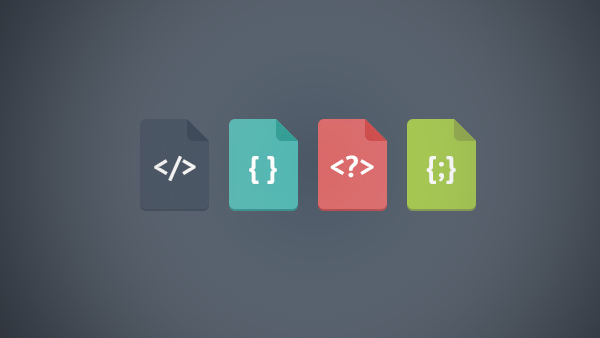在 JavaScript 中,this 这个特殊的变量是相对比较复杂的,因为 this 不仅仅用在面向对象环境中,在其他任何地方也是可用的。 本篇博文中会解释 this 是如何工作的以及使用中可能导致问题的地方,最后奉上最佳实践。
为了更好理解 this,将 this 使用的场景分成三类:
-
在函数内部 this 一个额外的,通常是隐含的参数。
-
在函数外部(顶级作用域中): 这指的是浏览器中的全局对象或者 Node.js 中一个模块的输出。
- 在传递给eval()的字符串中: eval() 或者获取 this 当前值值,或者将其设置为全局对象,取决于 this 是直接调用还是间接调用。
我们来看看每个类别。
this 在函数中这是最常用的 this 使用方式,函数通过扮演三种不同的角色来表示 JavaScript 中的所有可调用结构体:
-
普通函数(this 在非严格模式下为全局对象,在严格模式下为undefined)
-
构造函数(this 指向新创建的实例)
- 方法(this 是指方法调用的接收者)
在函数中,this 通常被认为是一个额外的,隐含的参数。
this 在普通函数中
在普通函数中,this 的值取决于模式:
- 非严格模式: this 是指向全局对象 (在浏览器中为window对象)。
function sloppyFunc() {
console.log(this === window); // true
}
sloppyFunc();- 严格模式: this 的值为 undefined。
function strictFunc() {
'use strict';
console.log(this === undefined); // true
}
strictFunc();也就是说,this 是一个设定了默认值(window或undefined)的隐式参数。 但是,可以通过 call() 或 apply() 进行函数调用,并明确指定this的值:
function func(arg1, arg2) {
console.log(this); // a
console.log(arg1); // b
console.log(arg2); // c
}
func.call('a', 'b', 'c'); // (this, arg1, arg2)
func.apply('a', ['b', 'c']); // (this, arrayWithArgs)如果通过new运算符调用函数,则函数将成为构造函数。 该运算符创建一个新的对象,并通过它通过this传递给构造函数:
var savedThis;
function Constr() {
savedThis = this;
}
var inst = new Constr();
console.log(savedThis === inst); // true在JavaScript中实现,new运算符大致如下所示(更精确的实现稍微复杂一点):
function newOperator(Constr, arrayWithArgs) {
var thisValue = Object.create(Constr.prototype);
Constr.apply(thisValue, arrayWithArgs);
return thisValue;
}在方法中,类似于传统的面向对象的语言:this指向接受者,方法被调用的对象。
var obj = {
method: function () {
console.log(this === obj); // true
}
}
obj.method();在浏览器中,顶层作用域是全局作用域,它指向global object(如window):
console.log(this === window); // true
在Node.js中,通常在模块中执行代码。 因此,顶级作用域是一个特殊的模块作用域:
// `global` (不是 `window`) 指全局对象:
console.log(Math === global.Math); // true
// `this` 不指向全局对象:
console.log(this !== global); // true
// `this` refers to a module’s exports:
console.log(this === module.exports); // trueeval() 可以被直接(通过真正的函数调用)或间接(通过其他方式)。 详细解释在这里。
如果间接调用evaleval() ,则this指向全局对象:
(0,eval)('this === window')
true否则,如果直接调用eval() ,则this与eval()的环境中保持一致。 例如:
// 普通函数
function sloppyFunc() {
console.log(eval('this') === window); // true
}
sloppyFunc();
function strictFunc() {
'use strict';
console.log(eval('this') === undefined); // true
}
strictFunc();
// 构造器
var savedThis;
function Constr() {
savedThis = eval('this');
}
var inst = new Constr();
console.log(savedThis === inst); // true
// 方法
var obj = {
method: function () {
console.log(eval('this') === obj); // true
}
}
obj.method();有三个你需要知道的与this相关的陷阱。请注意,在各种情况下,严格模式更安全,因为this在普通函数中为undefined,并且会在出现问题时警告。
陷阱:忘记new操作符
如果你调用一个构造函数时忘记了new操作符,那么你意外地将this用在一个普通的函数。this会没有正确的值。 在非严格模式下,this指向window对象,你将创建全局变量:
function Point(x, y) {
this.x = x;
this.y = y;
}
var p = Point(7, 5); // 忘记new!
console.log(p === undefined); // true
// 创建了全局变量:
console.log(x); // 7
console.log(y); // 5幸运的,在严格模式下会得到警告(this === undefined):
function Point(x, y) {
'use strict';
this.x = x;
this.y = y;
}
var p = Point(7, 5);
// TypeError: Cannot set property 'x' of undefined陷阱:不正确地提取方法
如果获取方法的值(不是调用它),则可以将该方法转换为函数。 调用该值将导致函数调用,而不是方法调用。 当将方法作为函数或方法调用的参数传递时,可能会发生这种提取。 实际例子包括setTimeout()和事件注册处理程序。 我将使用函数callItt() 来模拟此用例:
/**类似setTimeout() 和 setImmediate() */
function callIt(func) {
func();
}如果在非严格模式下把一个方法作为函数来调用,那么this将指向全局对象并创建全局变量:
var counter = {
count: 0,
// Sloppy-mode method
inc: function () {
this.count++;
}
}
callIt(counter.inc);
// Didn’t work:
console.log(counter.count); // 0
// Instead, a global variable has been created
// (NaN is result of applying ++ to undefined):
console.log(count); // NaN如果在严格模式下把一个方法作为函数来调用,this为undefined。 同时会得到一个警告:
var counter = {
count: 0,
// Strict-mode method
inc: function () {
'use strict';
this.count++;
}
}
callIt(counter.inc);
// TypeError: Cannot read property 'count' of undefined
console.log(counter.count);修正方法是使用[bind()](http://speakingjs.com/es5/ch17.html#Function.prototype.bind): The fix is to use bind():
var counter = {
count: 0,
inc: function () {
this.count++;
}
}
callIt(counter.inc.bind(counter));
// 成功了!
console.log(counter.count); // 1bind()创建了一个新的函数,它总是接收一个指向counter的this。
陷阱:shadowing this
当在一个方法中使用普通函数时,很容易忘记前者具有其自己this(即使其不需要this)。 因此,你不能从前者引用该方法的this,因为该this会被遮蔽。 让我们看看出现问题的例子:
var obj = {
name: 'Jane',
friends: [ 'Tarzan', 'Cheeta' ],
loop: function () {
'use strict';
this.friends.forEach(
function (friend) {
console.log(this.name+' knows '+friend);
}
);
}
};
obj.loop();
// TypeError: Cannot read property 'name' of undefined在前面的例子中,获取this.name失败,因为函数的this个是undefined,它与方法loop()的不同。 有三种方法可以修正this。
修正1: that = this。 将它分配给一个没有被遮蔽的变量(另一个流行名称是self)并使用该变量。
loop: function () {
'use strict';
var that = this;
this.friends.forEach(function (friend) {
console.log(that.name+' knows '+friend);
});
}修正2: bind()。 使用bind()来创建一个this总是指向正确值的函数(在下面的例子中该方法的this)。
loop: function () {
'use strict';
this.friends.forEach(function (friend) {
console.log(this.name+' knows '+friend);
}.bind(this));
}修正3: forEach的第二个参数。 此方法具有第二个参数,this值将作为此值传递给回调函数。
loop: function () {
'use strict';
this.friends.forEach(function (friend) {
console.log(this.name+' knows '+friend);
}, this);
}从概念上讲,我认为普通函数没有它自己的this,并且想到上述修复是为了保持这种想法。 ECMAScript 6通过[箭头函数](http://2ality.com/2012/04/arrow-functions.html)支持这种方法 - 没有它们自己的this。 在这样的函数里面,你可以自由使用this,因为不会被屏蔽:
loop: function () {
'use strict';
// The parameter of forEach() is an arrow function
this.friends.forEach(friend => {
// `this` is loop’s `this`
console.log(this.name+' knows '+friend);
});
}我不喜欢使用this作为普通函数的附加参数的API:
beforeEach(function () {
this.addMatchers({
toBeInRange: function (start, end) {
...
}
});
});将这样的隐含参数变成明确的参数使得事情更加明显,并且与箭头函数兼容。
beforeEach(api => {
api.addMatchers({
toBeInRange(start, end) {
...
}
});
});
 随时随地看视频
随时随地看视频




